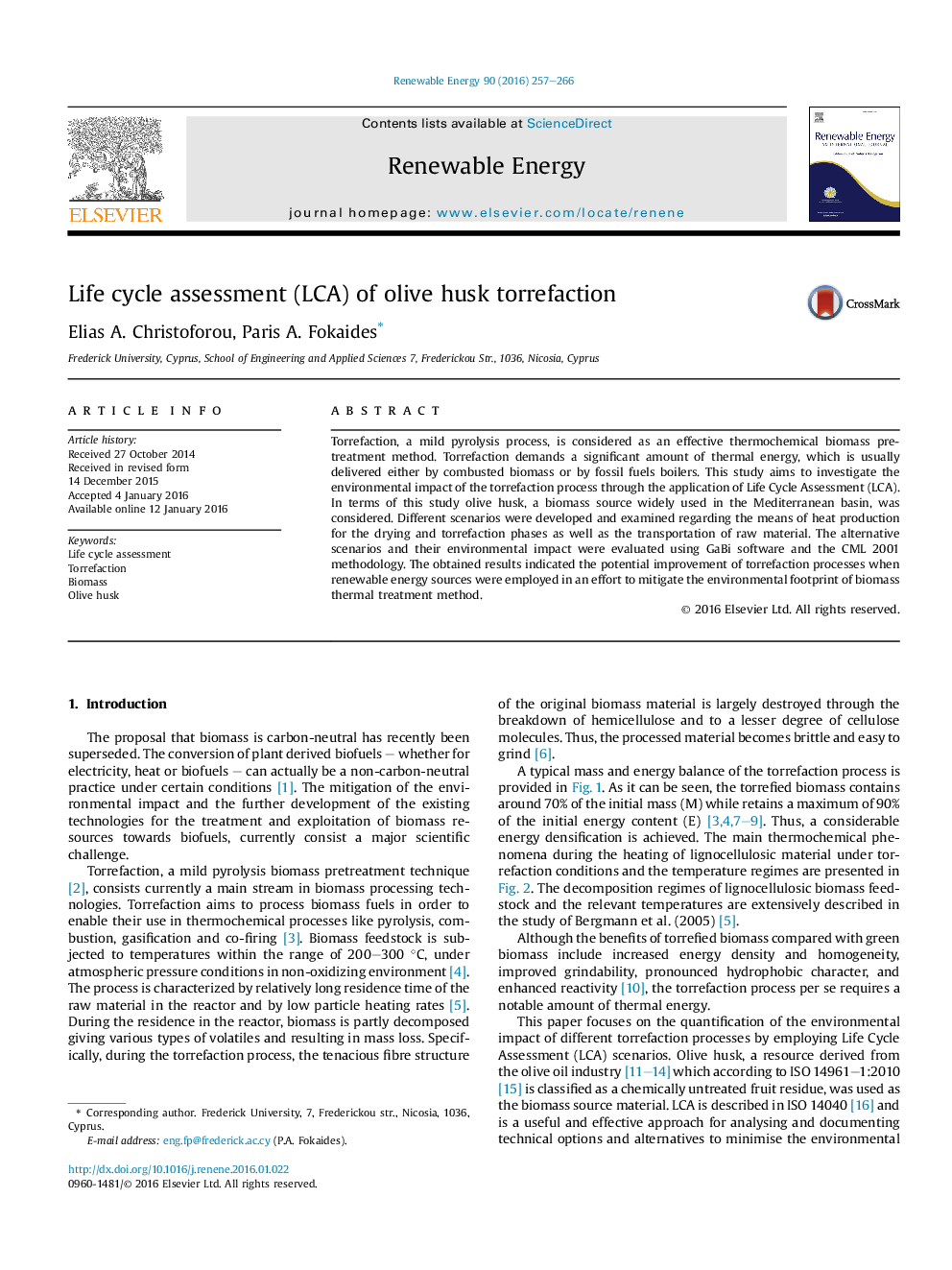| Article ID | Journal | Published Year | Pages | File Type |
|---|---|---|---|---|
| 299828 | Renewable Energy | 2016 | 10 Pages |
•This study investigates the Life Cycle Assessment (LCA) of torrefaction process of olive husk.•Different scenarios examined regarding the means of heat production for the drying and torrefaction phases.•The obtained results indicate the potential improvement by employing renewable energy sources for heating purpose.•The environmental importance of all major torrefaction stages were identified.•Means of improving the environmental performance of biomass torrefaction are concluded.
Torrefaction, a mild pyrolysis process, is considered as an effective thermochemical biomass pre-treatment method. Torrefaction demands a significant amount of thermal energy, which is usually delivered either by combusted biomass or by fossil fuels boilers. This study aims to investigate the environmental impact of the torrefaction process through the application of Life Cycle Assessment (LCA). In terms of this study olive husk, a biomass source widely used in the Mediterranean basin, was considered. Different scenarios were developed and examined regarding the means of heat production for the drying and torrefaction phases as well as the transportation of raw material. The alternative scenarios and their environmental impact were evaluated using GaBi software and the CML 2001 methodology. The obtained results indicated the potential improvement of torrefaction processes when renewable energy sources were employed in an effort to mitigate the environmental footprint of biomass thermal treatment method.
